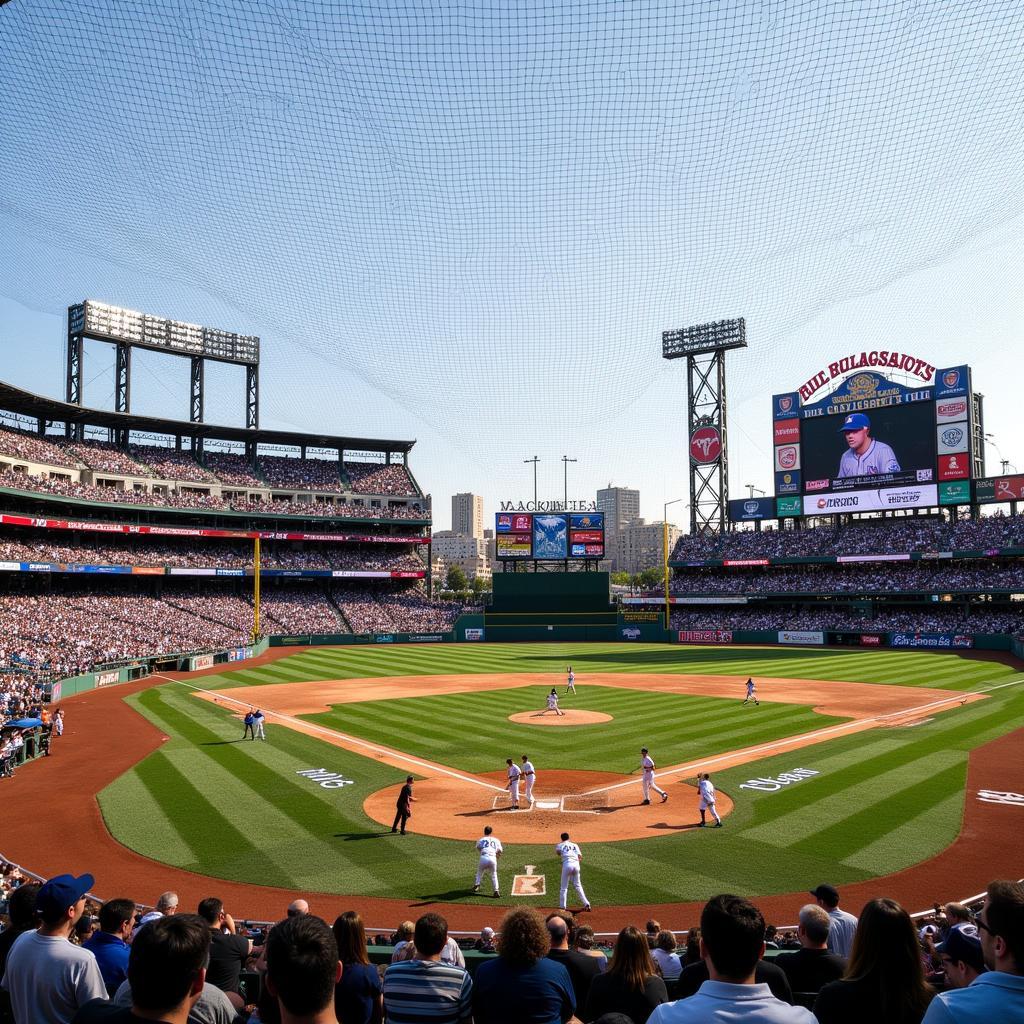Back Stop Netting: Essential for Safety and Performance
November 3, 2024Back Stop Netting is a crucial piece of equipment for any baseball or softball field, ensuring the safety of players, coaches, and spectators. It provides a barrier against errant balls, preventing injuries and property damage. In this article, we’ll explore the various aspects of backstop netting, from its importance to choosing the right type for your needs.
Why is Back Stop Netting Important?
Safety is paramount in any sport, and baseball is no exception. A high-quality back stop net acts as a protective shield, containing foul balls and preventing them from reaching unintended areas. This protects not only the people around the field but also surrounding buildings, vehicles, and equipment. Imagine a powerful line drive heading towards the dugout – a sturdy backstop netting is the difference between a near miss and a serious injury. You can find more information about netting for specific training scenarios, such as pitching, on my website, like pitching protective net.
Besides enhancing safety, backstop netting plays a vital role in the smooth flow of the game. By containing foul balls, it reduces interruptions and allows the game to proceed without unnecessary delays. This is especially crucial during competitive matches where every second counts.
Choosing the Right Back Stop Netting
Selecting the appropriate back stop netting depends on various factors, including the level of play, the location of the field, and budget considerations. Different types of netting offer varying levels of durability, visibility, and weather resistance. For example, 1/4 inch netting is a common choice for its balance of strength and visibility.
Material Matters
Netting materials typically include polyethylene, nylon, and polyester. Each material has its pros and cons. Polyethylene is a popular choice due to its affordability and UV resistance. Nylon offers excellent strength and durability, while polyester is known for its superior resistance to weathering.
Netting Gauge and Size
The gauge of the netting refers to the thickness of the twine. A higher gauge number indicates a thinner twine. The appropriate gauge depends on the force of impact the netting needs to withstand. Additionally, the size of the net, both height and width, should be carefully considered to provide adequate coverage for the specific field. Are you setting up a batting cage? Check out our batting cage packages.
Installation and Maintenance
Proper installation is essential for the effectiveness of any backstop netting. Ensure the net is securely fastened to sturdy poles or a frame. Regular inspection and maintenance are crucial to identify and address any damage or wear and tear, ensuring the continued safety and performance of the netting. A well-maintained backstop net is a long-term investment.
Frequently Asked Questions about Back Stop Netting
What is the standard height for a backstop net? Typically, backstop nets range from 20 to 30 feet high.
How do I choose the right netting gauge? The ideal gauge depends on the age and skill level of the players. Higher impact situations require a thicker gauge.
What is the best material for backstop netting? Polyethylene, nylon, and polyester are common choices, each offering different advantages in terms of cost, durability, and weather resistance.
How often should I inspect my backstop netting? Regular inspections, at least annually, are recommended to check for damage and ensure continued safety.
Can I install backstop netting myself? While possible, professional installation is recommended for optimal safety and performance.
What is a foul ball net? A foul ball net is designed to protect spectators and surrounding areas from foul balls hit outside of the playing field.
Where can I find baseball nets to hit into? Check out our range of baseball nets to hit into on our website.
Conclusion
Back stop netting is a fundamental element of any baseball or softball field, providing essential safety and contributing to a seamless playing experience. By carefully considering the factors discussed in this article, you can choose the right backstop netting to meet your specific needs and ensure a safe and enjoyable environment for everyone involved.
 Backstop Netting Ensuring Safety and Performance
Backstop Netting Ensuring Safety and Performance
If you need any further assistance, please don’t hesitate to contact us. Phone Number: 0963418788, Email: [email protected]. Or visit us at: 2M4H+PMH, Phường Nghĩa Thành, Gia Nghĩa, Đắk Nông, Việt Nam. We have a 24/7 customer service team.